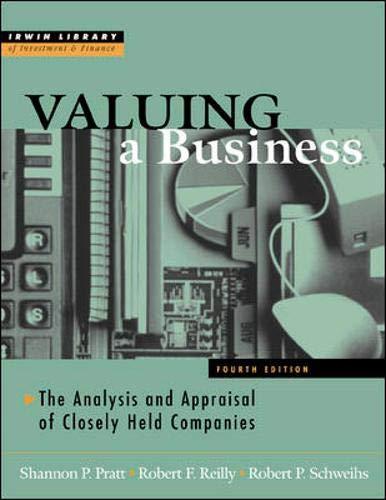Question
An investor considers putting $100,000 in two stocks: stock A and stock B today. Stock A offers an Expected Return of 0.0035 and a risk
An investor considers putting $100,000 in two stocks: stock A and stock B today. Stock A offers an Expected Return of 0.0035 and a risk of 0.003, while stock B offers an Expected Return of 0.0018 and a risk of 0.001. As you can see, Stock A offers higher reward but also higher risk than Stock B.
1. Find the optimal combination of how much to invest in each stock to get the maximum profit, and the amount of that profit, considering that you can only accept a risk (Standard Deviation) of 140 (30p)
2. As the investor increases the maximum acceptable level of risk (to 160, 200, 230) what happens with the amount invested in each stock? (10p)
3. As the investor increases the maximum acceptable level of risk (to 160, 200, 230) what happens with the expected total profit? Does it change? In what sense? Why?
Step by Step Solution
There are 3 Steps involved in it
Step: 1

Get Instant Access to Expert-Tailored Solutions
See step-by-step solutions with expert insights and AI powered tools for academic success
Step: 2

Step: 3

Ace Your Homework with AI
Get the answers you need in no time with our AI-driven, step-by-step assistance
Get Started


